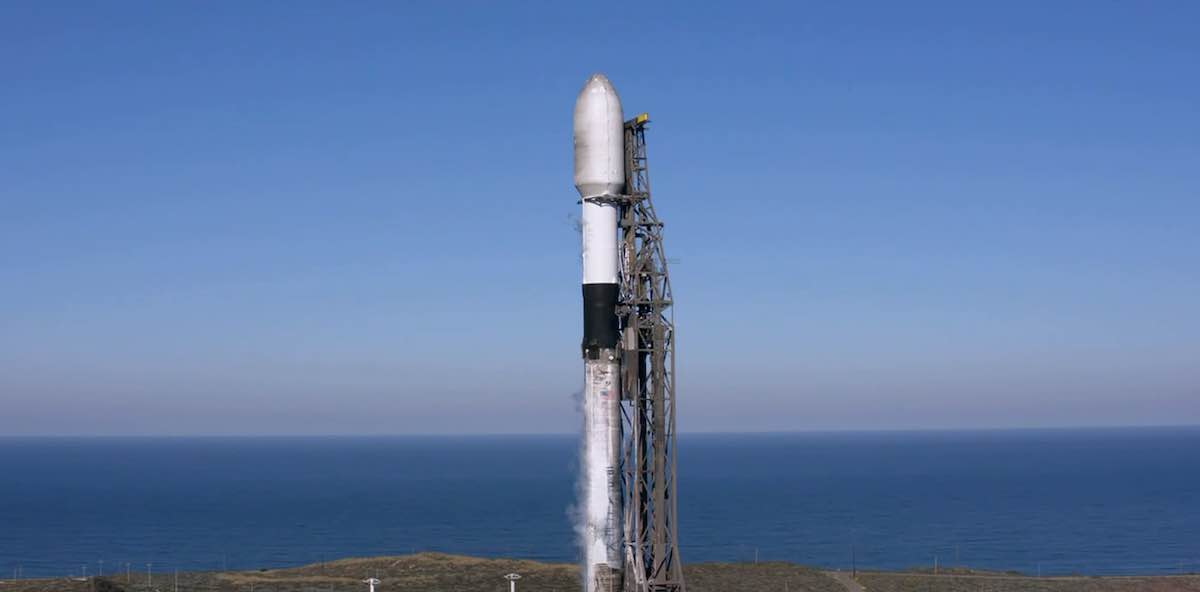
SpaceX’s Tuesday night Starlink mission isn’t just another satellite launch. It features the rare debut of a brand-new Falcon booster, adding a new chapter in rocket reusability
Why This Starlink Booster Mission Stands Out from Routine Launches

Starlink launches have become so common that many people see them as routine space events, but the Tuesday night mission was far from ordinary because it introduced a brand-new Falcon booster into active service. Over the past few years, most Starlink satellites have been
delivered to orbit using flight-proven boosters, some of which have already completed more than 20 missions. That’s why a fresh booster debut feels like a special milestone. Every new booster represents the continuation of SpaceX’s reusability model, showing that the company
is not only recycling rockets but also expanding its fleet with new hardware. A first mission is critical because it validates the entire build process, from the assembly of Merlin engines to the precision of landing legs and grid fins. Engineers closely monitor every detail — vibrations,
fuel flow, guidance, and even the landing attempt — because this data shapes the rocket’s reusability path. For Starlink, the booster’s performance is just as important as the satellites it carries, since reliability ensures hundreds of future launches can stay on schedule. This mission wasn’t only about satellites it was about welcoming a new workhorse into the rotation.
The Role of Starlink in SpaceX’s Bigger Vision
Starlink is often described as an internet project, but it is much more than that. For SpaceX, it is the financial backbone of the company’s long-term vision

of reaching Mars and building a multi-planetary future. Each batch of satellites launched into orbit contributes to a global constellation that brings internet access to underserved regions. But at the same time, every successful mission demonstrates the efficiency of the Falcon 9 system.
The Tuesday night launch with a new booster reflects this dual purpose. On one hand, the satellites will enhance coverage and improve connectivity. On the other hand, the rocket itself becomes part of the broader story of rapid reuse, proving that even fresh hardware can quickly become
a workhorse. For SpaceX’s engineers, every mission adds new data — on engine performance, booster recovery, and payload integration — making each launch a stepping stone toward more ambitious missions.
The Significance of a Fresh Falcon Booster
Over the past few years, the sight of a booster returning to Earth and landing on a drone ship has become normal. Some have flown more than 20 times

proving their durability. That’s why the appearance of a brand-new booster in this Starlink mission is such a rare event. It is a reminder that SpaceX continues to manufacture new rockets, ensuring that the fleet never becomes overstretched. A fresh booster also undergoes the most rigorous
set of checks and monitoring, as its first flight validates the entire build process. For engineers, a first launch is as much about data collection as it is about delivering the payload
. Every vibration, every engine burn, and every landing attempt teaches something new about the rocket’s design. For the public, it is a chance to witness the beginning of a new chapter in reusability — one that may see this booster flying again and again in the coming years.
What This Launch Means for the Future of Reusability
SpaceX’s reusability model is now the gold standard in spaceflight. By flying boosters multiple times, the company has reduced launch costs dramatically, allowing

more frequent missions and making space more accessible. But the introduction of a new into the rotation highlights the long-term sustainability of this system. It shows that the fleet is not just being reused but also being expanded. A fresh adds capacity
, ensuring that the company can keep up with its ambitious launch schedule, which includes not only Starlink missions but also commercial payloads, government satellites, and eventually crewed flights. In this way, Tuesday night’s mission was not just about internet satellites but
about the future of the entire launch industry. Every new booster strengthens the foundation on which more daring projects, like Starship and Mars missions, will be built.
Looking Ahead After Tuesday Night’s Launch
The successful debut of a new Falcon during the Starlink mission is a promising sign for what lies ahead. SpaceX is pushing toward an even busier schedule, with multiple launches every week becoming the new normal. At the same time, Starship development is moving forward

and Falcon 9 remains the reliable workhorse that carries the company’s present on its shoulders. This balance between the proven Falcon 9 and the ambitious Starship shows how SpaceX is building both short-term stability and long-term vision. For space fans, Tuesday night’s launch
was more than just another rocket carrying satellites. It was a rare reminder that behind every flame and every countdown lies a bigger story — of new beginnings
long-term goals, and the pursuit of making space travel routine for humanity.

